- The author’s journey of becoming obsessed with Japanese luxury watches and starting a blog
- The first watch is a Rolex. Now, what about the second one?
- Confrontation of Philosophies: Switzerland vs. Japan
- Grand Seiko: Quiet Perfectionism
- The Citizen: A Challenge for the Future and Ultimate Precision
- Seiko Presage Craftsmanship: Wearable ‘Craft’
- Conclusion: The formation of a perfect collection that complements European watches.
The author’s journey of becoming obsessed with Japanese luxury watches and starting a blog
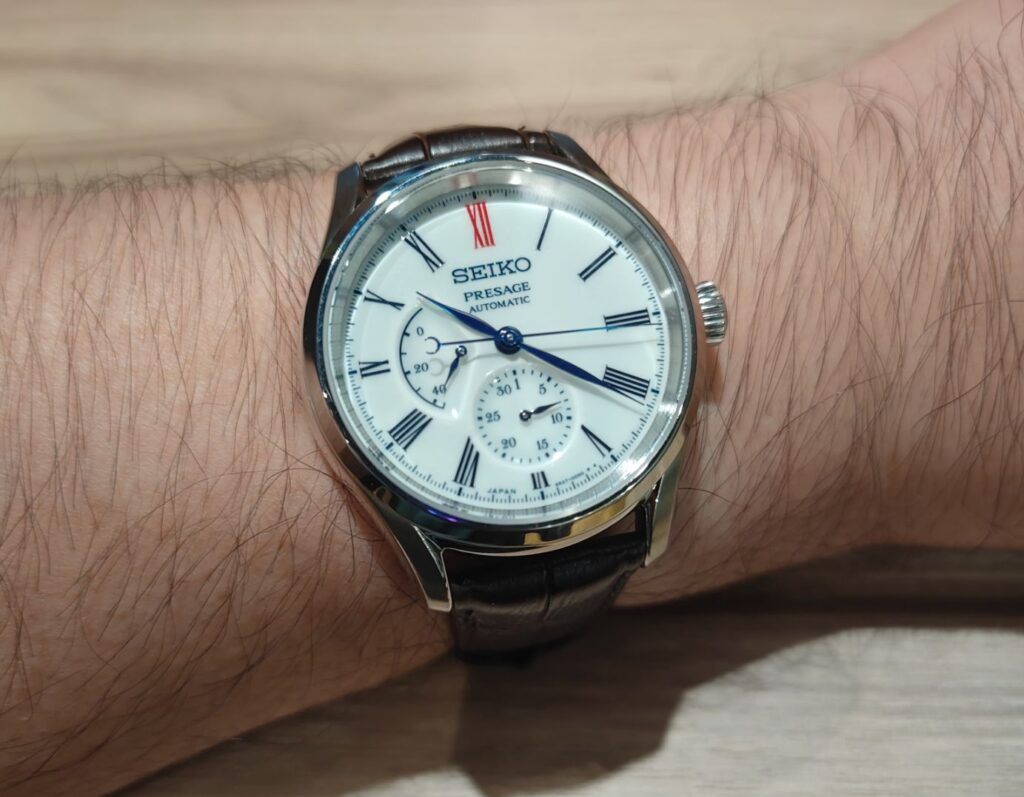
・Originally, I had no interest in luxury watches and used a Germin Android watch.
・I learned about the allure of luxury watches when I went to a jewelry shop accompanied by my wife.
・On the way home, I read a watch magazine and was drawn to the Seiko Presage Craftsmanship Arita porcelain model.
・I checked the actual Arita porcelain model at the Seiko shop in the nearby department store. I felt even more attracted to it than in the photos, and although I considered purchasing it, I went home without buying it that day.
・I thoroughly research information about luxury watches on the internet, focusing on Seiko products.
・I feel even more fascinated by the depth of the history of luxury watches and the various brands that weave it together.
・As I researched the history of Seiko, the feeling of wanting to support Japanese watch manufacturers arose (of course, I am also attracted to their products).
・I became interested in Grand Seiko and started researching about it on the internet.
・I watch a lot of YouTube videos about the Grand Seiko boutique and Shizukuishi Studio.
・A watch enthusiast acquaintance told me, ‘You should see a Grand Seiko in person at least once.’
・Furthermore, I’ve been researching Grand Seiko online and I’m quite intrigued.
・I went to the nearby Grand Seiko salon and was shown Shirakaba model (as well as the Yoru Shirakaba model).
・While feeling very attracted (especially to the Yoru Shirakaba model), I left the Grand Seiko salon unable to match th
The first watch is a Rolex. Now, what about the second one?
The first luxury wristwatch, often recognized as a Rolex or another esteemed European brand, is a natural progression for many watch enthusiasts. It is not merely a tool for telling time; it is a testament to success, embodying unwavering quality and a rich history—truly a status symbol that resonates globally.

However, the journey of watch collecting does not end there. Rather, it is merely a prologue. When selecting the second wristwatch, that choice transforms into a more personal quest. It symbolizes not just the pursuit of brand prestige, but a profound exploration of one’s own insights and tastes, marking the beginning of a path as a true watch enthusiast.
In this journey, Japanese high-end watches, which boast an aesthetic sensibility and technical prowess that is different from yet equal to or exceeding that of Europe, become the most attractive and valuable destination. Japanese watches offer a unique set of values that differ from the brands of European luxury timepieces. This includes quiet and understated elegance, perfection in the details, and a distinctive philosophy that blends tradition with innovation. If the first Rolex embodies the beauty of a universal tool, then Japanese watches present the value of ‘functional works of art.’ Adding a Japanese watch to one’s collection signifies more than merely acquiring a new piece; it represents a sophisticated step towards a deeper understanding of the entire history and culture of watches, enriching one’s journey even further.
Confrontation of Philosophies: Switzerland vs. Japan
In the world of watchmaking, two giants, Switzerland and Japan, exist, each having developed from distinct philosophies and historical backgrounds. Understanding this difference in philosophy is crucial to uncovering why Japanese watches possess a charm that sets them apart from their European counterparts.
The tradition of Swiss watchmaking, specifically known as “haute horlogerie” (high-end watch manufacturing), is deeply rooted in a centuries-old system of artisan guilds. Within this framework, specialized companies collaborate through division of labor in various processes such as movement manufacturing, case production, and dial creation, thereby forming an ecosystem that collectively yields a singular masterpiece. This approach enables experts in each field to refine their respective skills, resulting in the label “Swiss made” becoming a symbol of unparalleled quality and prestige. Its value is encapsulated in the artistry produced by complex mechanical movements and skilled craftsmanship.

On the other hand, Japanese watch manufacturing has developed based on the philosophies of ‘Monozukuri’ and ‘Kaizen.’ This perspective values a self-sufficient ‘manufacture’ model, aiming for brands to complete the entire production process in-house, from the movement, which is the heart of the watch, to the exterior, and at times even the cultivation of crystals and the production of alloys. This autonomous approach serves as a driving force in the pursuit of continuous innovation without relying on other companies, fostering an environment marked by an obsessive attention to detail.
The confrontation between these two philosophies was most dramatically exemplified by the ‘Quartz Revolution’ that shook the world in the 1970s. In 1969, Seiko introduced the world’s first commercially available quartz wristwatch, the ‘Astron’. This technology fundamentally transformed the watch industry, being significantly more accurate and cheaper to produce than traditional mechanical watches. The Swiss watch industry viewed this new technology as a threat to tradition and hesitated to accept it. As a result, many workshops were forced to close, leading to the ‘Quartz Shock’, which caused tens of thousands of artisans to lose their jobs.

However, this crisis served as an opportunity for Switzerland to make a comeback. Underestimating quartz technology, Switzerland established the Swatch Group through industry restructuring, securing funds by mass-producing inexpensive quartz watches, and allocating those profits to revive traditional high-end mechanical watches. As a result, Switzerland established a polarized strategy of an inexpensive quartz market and a super-premium mechanical market, as seen today.
In contrast, Japan perceived quartz not as a “crisis” but as a “revolution.” Through its vertically integrated manufacturing system and a philosophy centered on continuous improvement, Japan elevated quartz technology to perfection, establishing a new standard in watchmaking. This historical turning point is not merely a discussion of technological superiority; it narrates the difference between Switzerland’s cautiousness, which temporarily rejected new technology to preserve tradition, and Japan’s foresight that sought innovation and redefined its own identity while looking toward the future. Understanding this background makes it clear that the value offered by Japanese watches is not merely that of an alternative, but rather a result of pursuing an entirely different aspect of the art of watchmaking.
Grand Seiko: Quiet Perfectionism
While European luxury watches assert their presence powerfully, Grand Seiko speaks to true watch enthusiasts with a quiet and modest aesthetic. Its refined demeanor is referred to as “stealth wealth,” and only those with deep knowledge of watches can truly appreciate its value.
Refined Beauty: Zaratsu Polishing
The philosophy of Grand Seiko is most prominently reflected in the finishing of its cases. The key element is the ‘Zaratsu polishing,’ which is carried out by skilled artisans by hand. This technique involves attaching a polishing sheet to a rapidly rotating metal disc and pressing parts against it to create a flawless mirror surface without any distortion. As the outcome is greatly influenced by slight variations in applied force or angle, it requires an exceptionally high level of concentration and skill from artisans who have undergone months of training.
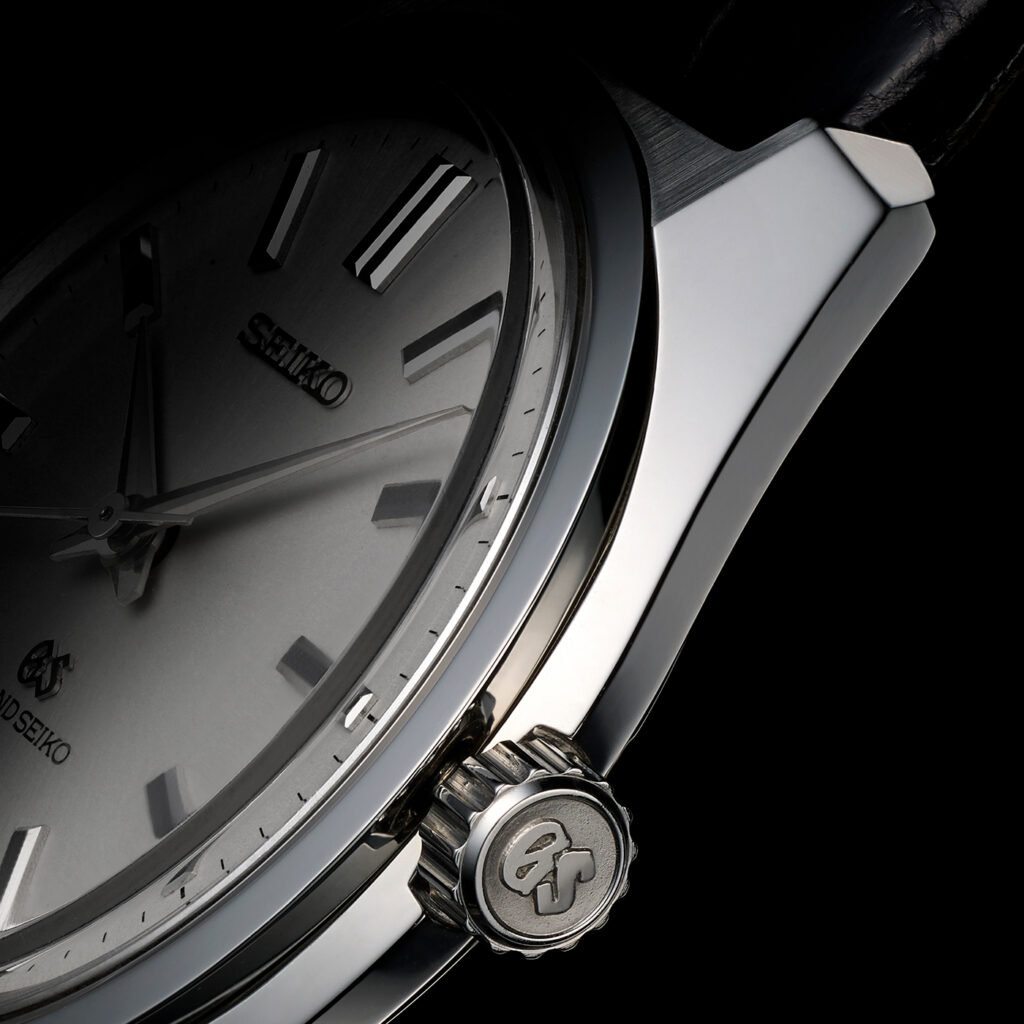
This polishing technology holds a meaning beyond mere surface finishing. It embodies the traditional Japanese aesthetic of ‘harmony of light and shadow.’ A perfectly reflective surface mirrors light flawlessly, dramatically altering the expression of the case with even the slightest change in angle. This delicate expression woven from light and shadow resonates with the beauty found in Japanese shoji and fusuma, which possess simple yet infinite expressions. The philosophy of ‘light and shadow’ forms the core of Grand Seiko’s design language, ‘Seiko Style,’ and this exquisite finishing is sometimes said to radiate a deeper brilliance in its capture of light when compared to a Rolex Submariner.
Innovative movement
Grand Seiko has set new standards in the world of horology by developing original movements that respect tradition while transcending existing frameworks.
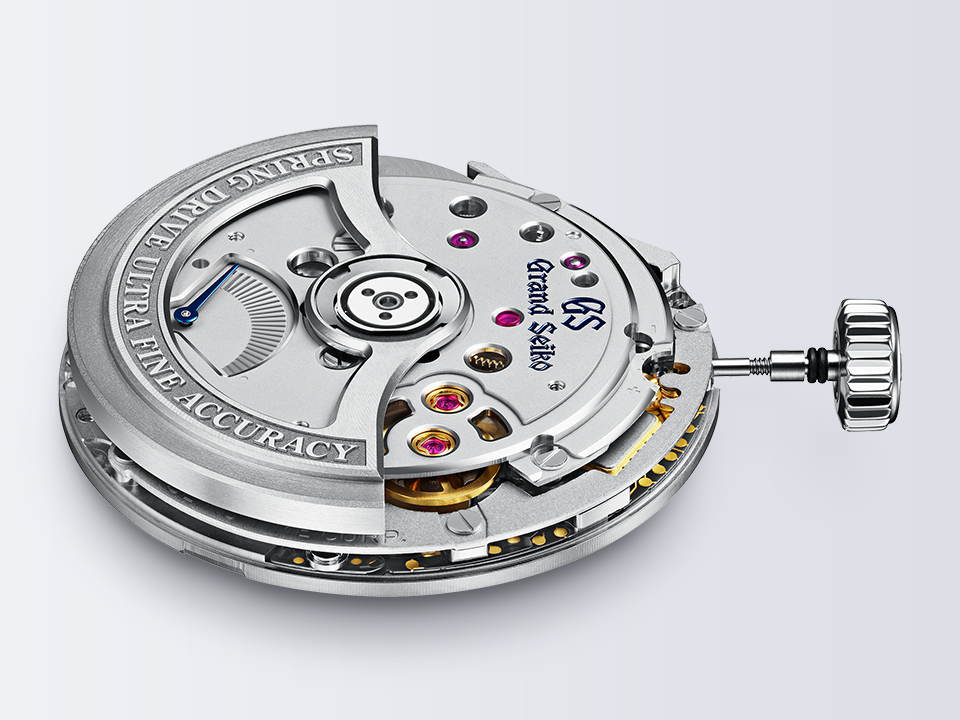
- Spring Drive: One of Grand Seiko’s most innovative achievements is this hybrid movement. It adopts a completely new method that harnesses the torque of a mechanical watch as its power source while controlling time with the precision of a quartz crystal oscillator. This allows for an unprecedented level of high accuracy that is unattainable by mechanical watches, while the second hand moves as if time itself is flowing, gliding smoothly and silently. This is a unique technology found only in Grand Seiko, not seen in any Swiss brands.
- Hi-Beat 36000: Furthermore, Grand Seiko has maximized the performance of traditional mechanical movements to the utmost limits. The high beat of 36,000 vibrations per hour significantly surpasses the standard mechanical movement rate of 28,800 vph, achieving higher precision. Typically, as the frequency increases, power reserve is compromised; however, Grand Seiko’s Hi-Beat movement maintains a practical longevity of up to 80 hours. This symbolizes Japan’s relentless pursuit of excellence in traditional watchmaking technology.
Artistic Dial
Grand Seiko elevates the dial from merely a placement for characters and indices to a work of art. Many of these are inspired by the natural beauty and seasonal landscapes of Japan, with each dial telling a profound story.
Snowflake(YukiShiro): One of the most renowned dials, it reproduces the freshly fallen snow that blankets the mountains of Shinshu. Its delicate and uneven texture is achieved through the precise application of silver plating to a thickness of one micron, and the way it changes expression with variations in light is breathtakingly beautiful.
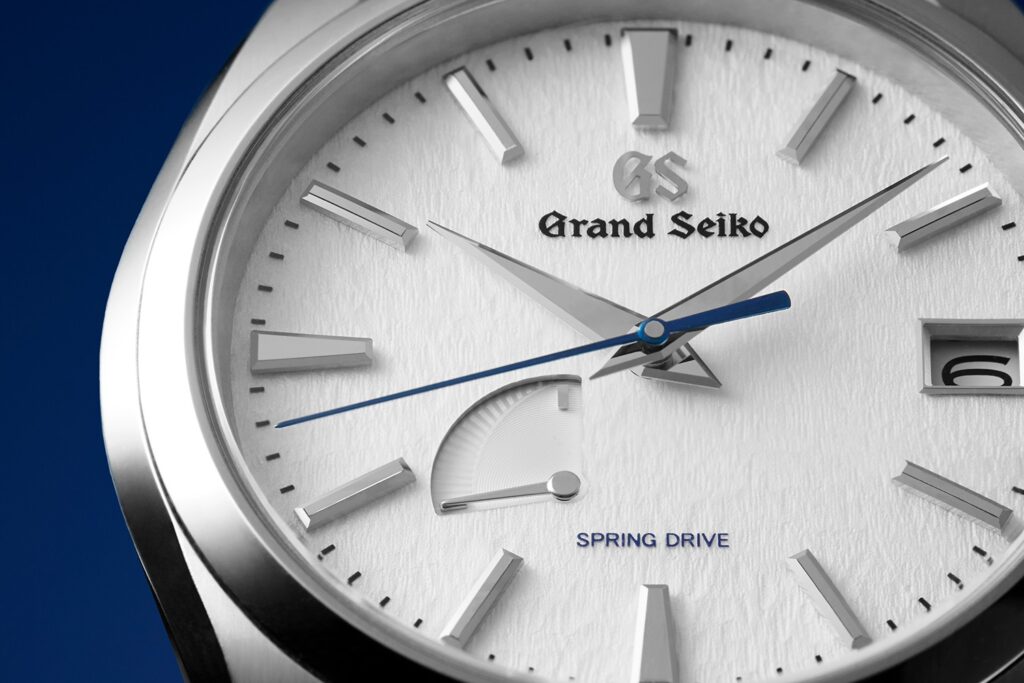
White Birch(Shirakaba): Inspired by the birch forests that spread near the workshop in Shizukuishi, Iwate Prefecture. The deep, organic grooves reflect the dynamic expressions of the wood’s surface with every touch of light, inviting the observer to experience a sensation as if they were within the forest.
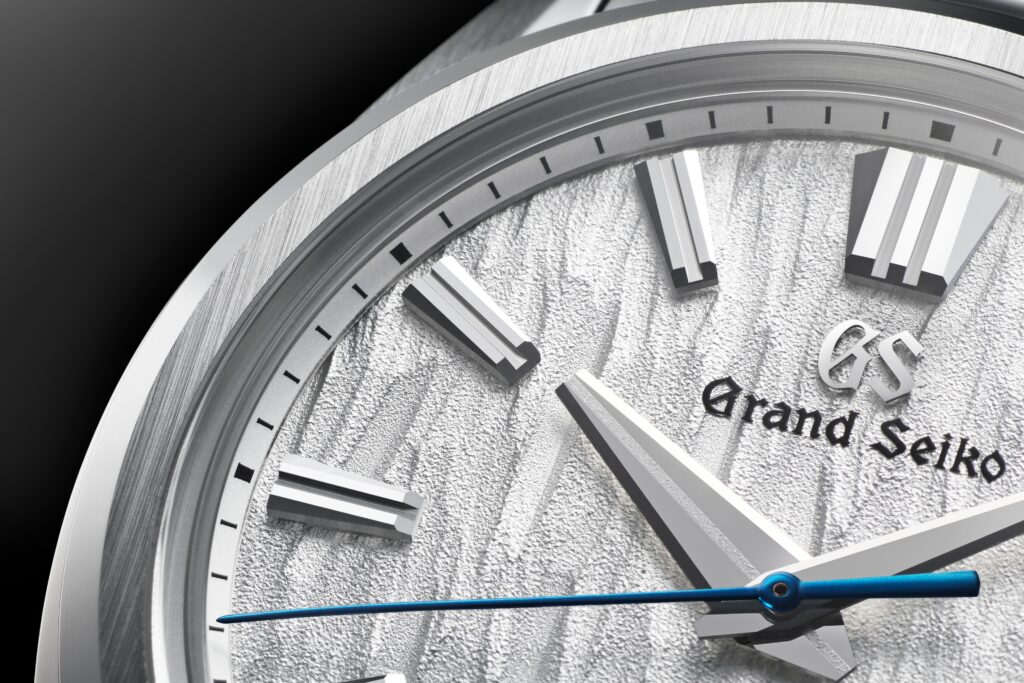
A Grand Seiko from the Perspective of a Rolex Owner: A Candid Comparison
The elements that are often regarded as the ‘weaknesses’ of Grand Seiko are, in fact, a necessary consequence of its philosophy. For instance, the perfect mirror finish created by Zaratsu polishing may be more prone to scratches compared to the robust finish of Rolex, due to its artistic nature. However, this is not a deficiency in quality, but rather a result of an aesthetic choice made through craftsmanship. Moreover, the fact that resale values are not as high as those of Rolex provides owners the freedom to enjoy the watch wholeheartedly as a work of art that enriches their daily lives, rather than merely as an asset. Grand Seiko likely encourages wearers to love and purely enjoy their timepieces.
The Citizen: A Challenge for the Future and Ultimate Precision
While European mechanical watches pursue precision by perfecting traditional techniques, The Citizen continues to challenge ‘ultimate accuracy’ through an entirely different approach. This philosophy, named ‘Challenging the Future,’ aims to redefine the essence of a watch—’to mark accurate time’—using the latest technology.
The Miracle of ‘Annual Variation of ±1 Second’: Caliber 0100
The pinnacle of The Citizen’s technological prowess is represented by the light-powered Eco-Drive movement ‘Caliber 0100’. This movement boasts an astonishing accuracy of ±1 second per year. This level of precision is unattainable by any mechanical watch, and can be regarded as a forward-thinking answer that carries the spirit of the quartz revolution into the modern age.
This incredible level of precision is supported by several innovative technologies. First, it employs an AT-cut quartz crystal oscillator that vibrates at 8.4 megahertz, which is approximately 256 times that of the fork-type quartz oscillators commonly found in standard quartz watches. Furthermore, to compensate for temperature variations that most significantly affect the accuracy of the quartz oscillator, the watch is equipped with a function that measures and corrects the internal temperature 1,440 times a day, at one-minute intervals. As a result, it maintains high precision without being affected by seasonal or environmental temperature changes.
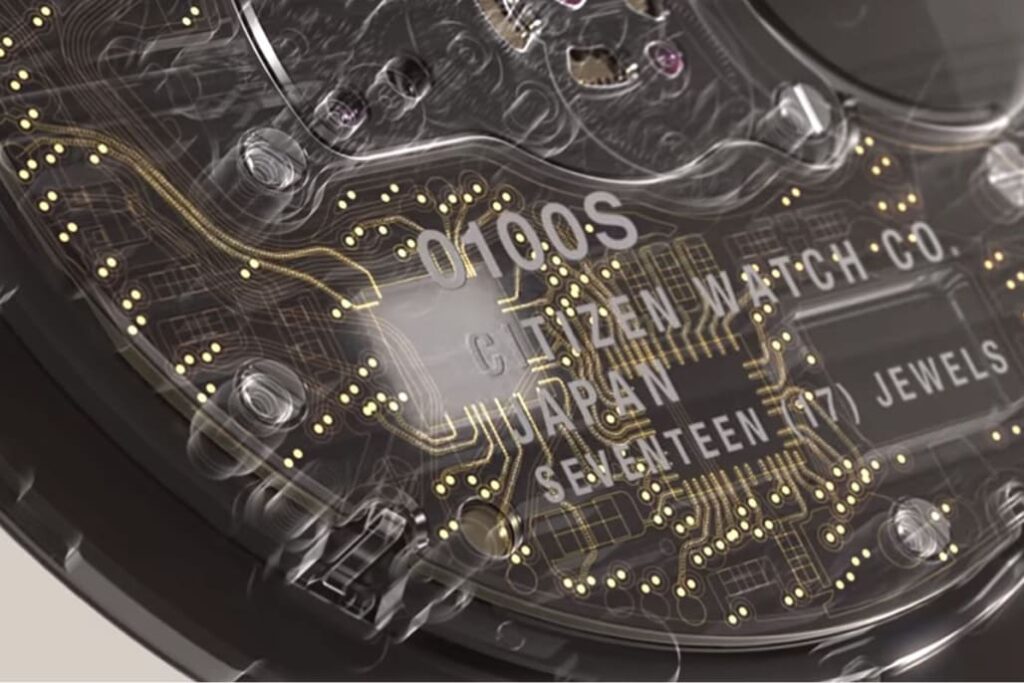
Eco Drive: Ultimate Convenience
The ‘Eco-Drive’ featured in The Citizen offers ultimate convenience, unlike mechanical watches such as Rolex. This technology converts all forms of light, including sunlight and indoor lighting, into electrical energy to power the watch. Once fully charged, depending on the model, it can continue to operate for several months to seven years, eliminating the need for regular battery replacements. This presents a significant advantage for collectors who own multiple watches. Mechanical watches that are not worn frequently tend to stop after a few days of inactivity, requiring the owner to readjust the time; in contrast, Eco-Drive provides the ultimate ‘set and forget’ experience by continuing to operate even when left alone.
The fusion of tradition and technology
The Citizen creates a unique aesthetic by fusing cutting-edge technology with traditional Japanese craftsmanship. For instance, some models feature hand-made “Tosa washi” paper on the dial. The delicate texture of washi, combined with the hidden photovoltaic cells underneath, merges ancient art with modern technology, resulting in a distinct serene beauty. This illustrates The Citizen’s approach of perceiving watches not merely as precision instruments, but as works that encapsulate the essence of Japanese culture and technology.
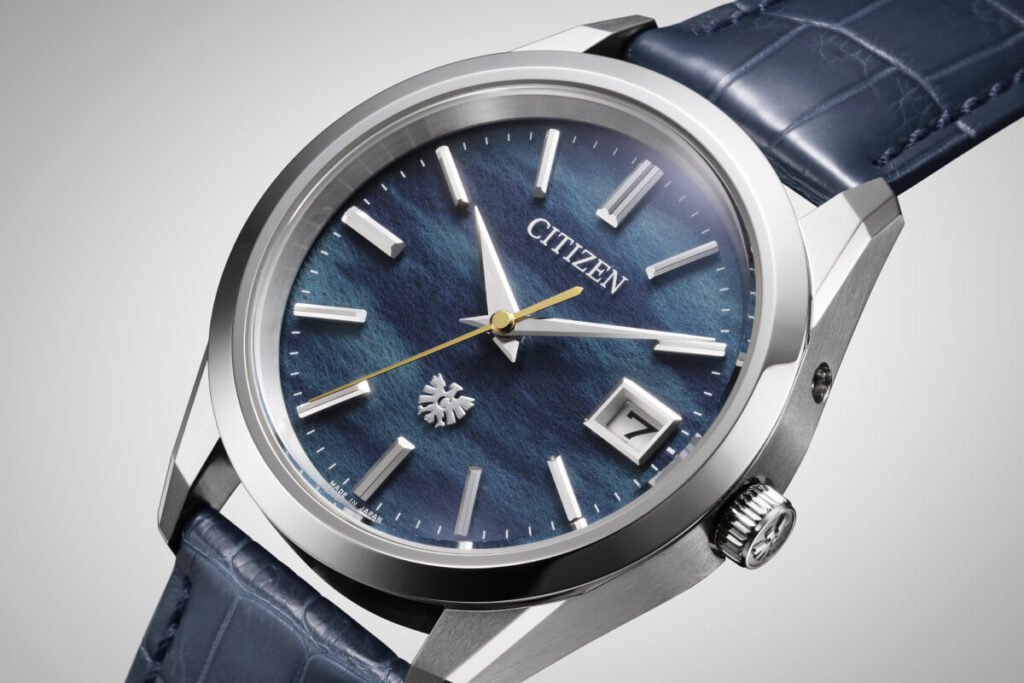
The Citizen pursues a dimension of ‘technical perfection’ that is entirely different from the ‘traditional perfection’ sought by mechanical watches. This represents a modern expression of the relentless quest for ‘accuracy’ that underpins Japanese watchmaking since the onset of the quartz revolution. In addition to the values of ‘robustness’ and ‘reliability’ exemplified by Rolex, The Citizen brings new values of ‘ultimate precision’ and ‘consideration for the environment’ to its collection.
Seiko Presage Craftsmanship: Wearable ‘Craft’
The Seiko Presage Craftsmanship plays a role in presenting Japanese traditional craftsmanship to the world in the form of wristwatches at an accessible price. This is an attempt to integrate the concept of “craftsmanship,” which pursues the Japanese aesthetic of “beauty in utility,” into contemporary life. The Presage “Craftsmanship Series” adds cultural and artistic depth to the collection, distinct from the universal luxury associated with European watches.
The Art of Craftsmanship: Arita Ware Dial
One of the most impressive dials of the Presage is the dial made of ‘Arita ware,’ which boasts a history of over 400 years. This dial has been crafted in collaboration with Mr. Hiroyuki Hashiguchi, a long-established kiln master from Arita, and Seiko’s engineers. In order to be used as a clock dial, a new material was developed that possesses more than four times the hardness of standard Arita ware, ensuring its durability.
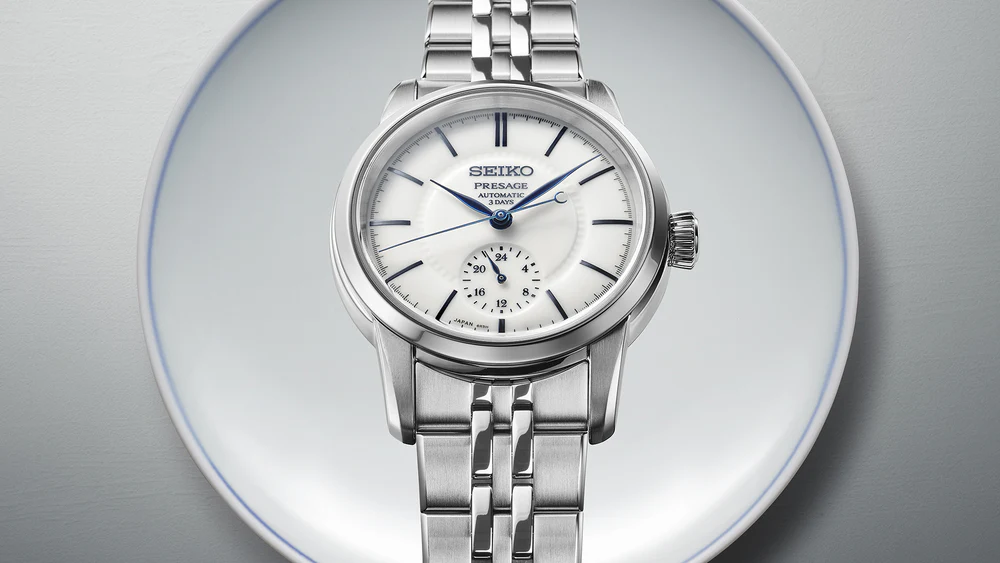
In particular, the model of “unglazed Arita ware” exudes a unique charm. By omitting a glossy glaze, the soft texture and warm white of the material are accentuated, allowing the three-dimensional texture applied to the dial to delicately emerge with light. This is a deliberate aesthetic choice to avoid flattening the design with the gloss of glaze. The Arita ware dial of Presage aims to pass on this technique to future generations without losing its heritage by applying ancient traditional craftsmanship to modern products. Owning a watch thus contributes to supporting Japanese traditional culture and its preservation.
Profound Radiance: Urushi(lacquer) Dial
Another exemplary instance is the watch dial crafted using traditional Japanese lacquer. Under the supervision of lacquer artist Kazuhira Tamura, based in Kanazawa, Ishikawa Prefecture, artisans meticulously layer the lacquer dozens of times and repeatedly polish it to create this masterpiece. Lacquer possesses the unique characteristic of deepening in color and enhancing its distinctive luster over time, thereby truly exemplifying a ‘living work of art.’

This handcrafted process means that no two dials are exactly the same. The nuances in color and subtle distortions reflect the craftsman’s hand movements and the character of the natural materials, which collectively bestow a unique story upon each individual watch. Since ancient times, urushi has been used as a material to protect important objects due to its durability and antibacterial and antifungal properties. Utilizing urushi on the watch dial not only enhances beauty but also carries a profound cultural significance of preserving what is valuable across time.
The Seiko Presage craftsmanship offers a ‘cultural and personal value’ that is distinct from the ‘universal value’ provided by Rolex. It embodies a unique story of Japanese artistry, which has a history of several centuries, becoming accessible in the form of modern timepieces. With its remarkably affordable price range, Presage allows one to engage with this profound artistry, making it a perfect choice that broadens the scope of any collection and provides a new perspective.
▼For more information about the Seiko Presage Craftsmanship series, click here.
Conclusion: The formation of a perfect collection that complements European watches.
For those who have chosen a European luxury watch, particularly a Rolex, as their first timepiece, Japanese watches are not merely substitutes. They represent a sophisticated ‘next step’ that enriches the collection they already possess and demonstrates a profound understanding of horology.
While Rolex embodies values such as “robustness” and “universal status,” Japan’s pride—Grand Seiko, The Citizen, and Seiko Presage Craftsmanship—offers distinct yet profoundly complementary values.
- Grand Seiko: Its quiet and perfect finish, along with its innovative movement, adds a beauty of ‘artwork’ in contrast to Rolex, which is regarded as a ‘tool.’ It showcases a new way to enjoy timepieces by wearing them purely and appreciating the details, without being constrained by high resale value.
- The Citizen: While Rolex pursues a mechanical perfection inherited from the past, The Citizen presents a precision of ‘±1 second per year’, an accuracy unattainable by mechanical watches, along with future-oriented convenience. This adds an entirely new dimension of ‘cutting-edge technological innovation’ to the collection.
- Seiko Presage Craftsmanship: Unlike the mass-produced luxury of Rolex, Presage offers a unique cultural narrative rooted in Japanese traditional craftsmanship in an astonishingly accessible form. This teaches us that watch collecting is not merely about gathering symbols of brands, but rather a journey to engage with artisan skills and cultural heritage from around the world.
A truly sophisticated watch collection is completed not by adhering to a single brand or philosophy, but by respecting the diverse aesthetics, craftsmanship, and narratives of various timepieces. Choosing Japanese watches will serve as the most eloquent evidence of how watch enthusiasts have evolved from a pursuit of ‘status’ to one of ‘true discernment.’ It is the perfect ‘second choice’ that further enhances the brilliance of the Rolex they already own.
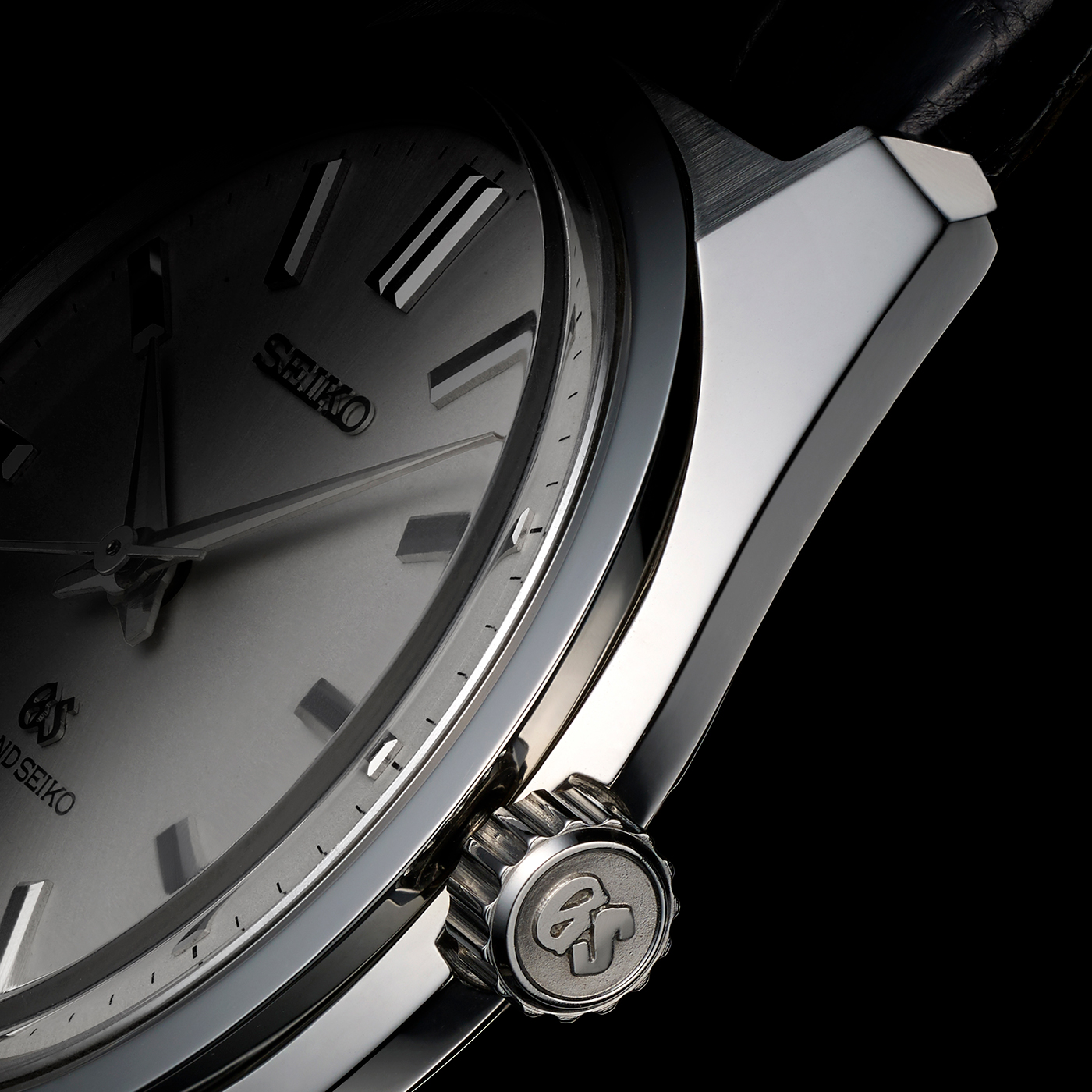


コメント